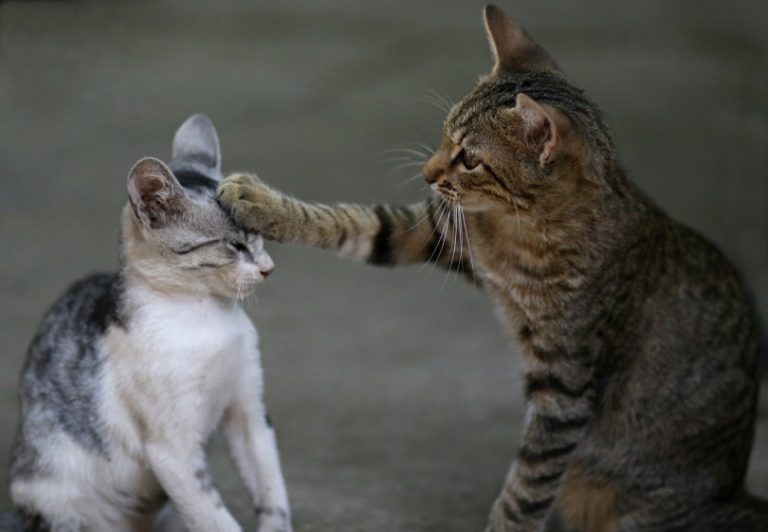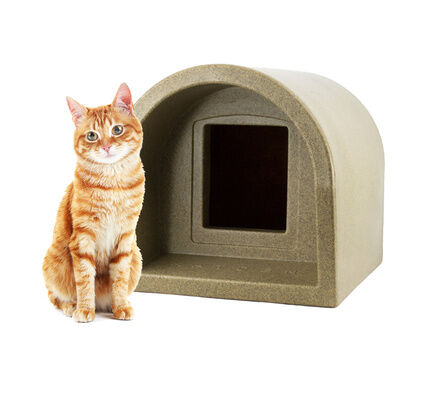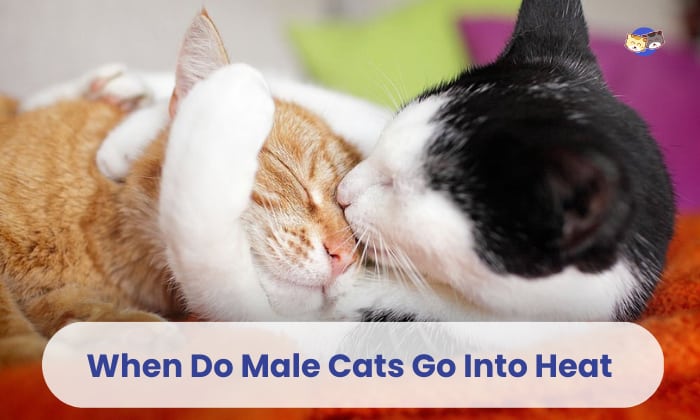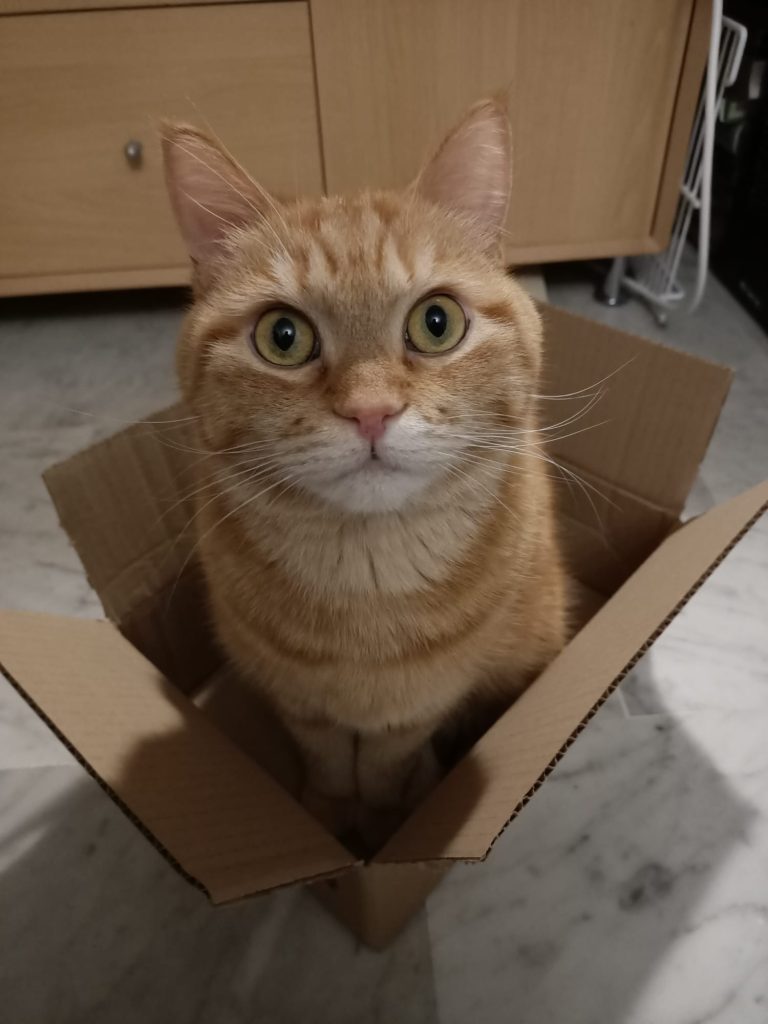What Do Cats See When They Look at Humans?

Cats see humans as larger creatures that may provide food, attention, or potential threats. Cats have a unique perspective on the world around them, including how they see humans.
When cats look at humans, they perceive them as larger creatures with intriguing behaviors and potential sources of food. Cats are known to observe humans carefully, assessing their intentions and actions. They might see humans as potential providers of attention, affection, and treats.
However, cats also view humans as potential threats if they feel threatened or cornered. Understanding how cats perceive humans can help us build better relationships with our feline friends. We will delve deeper into what cats see when they look at humans, exploring their visual capabilities and the role of perception in their interactions with us.
Cat Vision: Understanding Their Perspective
When sharing our lives with cats, it’s only natural to wonder what they see when they look at us. Their unique visual abilities offer a fascinating glimpse into their world. By understanding how cats perceive the world around them, we can forge a deeper connection and ensure their happiness. In this post, we delve into the intriguing topic of cat vision and explore their perspective.
How Cats Perceive The World Around Them
Cats have a distinct way of perceiving the world around them due to their exceptional vision. While humans rely heavily on color vision, cats primarily rely on their well developed night vision, hunting abilities, and motion-detection skills.
Here are a few key features that shape a cat’s unique perspective:
Night Vision:
Cats possess a specialized structure in their eyes called the tapetum lucidum. This structure allows them to reflect light back through their retina, enhancing their ability to see in low-light conditions. Consequently, cats can see objects and movements more clearly in the dark than humans can.
Visual Field:
Unlike humans, cats have a wider field of view. While humans have an approximate field of view of 180 degrees, cats’ visual panorama can span up to an impressive 200 degrees. This expanded peripheral vision aids in their hunting instincts, allowing them to detect prey or potential threats from various angles.
The Unique Visual Abilities Of Cats
Cats possess several visual abilities that distinguish their perception from ours. These abilities include:
Focus on Nearby Objects:
Cats excel at focusing on objects that are nearby. They have shorter focal lengths compared to humans, enabling them to see objects clearly at close proximities. This visual acuity aids them in tasks such as tracking prey and assessing their immediate surroundings.
Greater Sensitivity to Motion:
Cats have an incredible ability to detect even the slightest of movements. Their eyes are adept at picking up motion, making them excellent hunters. This sensitivity to motion helps cats in pinpointing prey or identifying potential threats, ensuring their survival instincts are always on high alert.
Limited Color Vision:
While cats do possess some degree of color vision, it is not as vibrant or extensive as humans’. Their color spectrum is limited, primarily consisting of blues and greens. As a result, cats might perceive certain objects differently in terms of color than we do.
The Perception Of Humans In Cat’s Eyes
When it comes to the perception of humans in a cat’s eyes, understanding how cats recognize and detect humans is crucial. These feline companions have a unique way of observing and interacting with us. In this blog post, we will delve into the fascinating world of cats’ perception and explore what they see when they look at humans.
How Cats Recognize And Detect Humans
Cats have a remarkable ability to recognize and distinguish between humans. They rely on various sensory cues to identify individuals. Here are some ways cats recognize and detect humans:
- Voice: Cats can recognize and recall familiar voices. They pick up on the unique tone, pitch, and rhythm of our voices, enabling them to distinguish between different individuals.
- Scent: Cats possess a highly developed sense of smell. They can detect different scents on our bodies, clothes, and belongings. This helps them recognize familiar humans and differentiate between strangers.
- Body Language: Cats are keen observers of body language. They pay attention to our movements, gestures, and postures. This helps them understand our intentions and emotions.
Human Faces: What Cats Notice And Focus On
When cats look at humans, their attention is often drawn to certain facial features. Here are some aspects of human faces that cats typically notice and focus on:
- Eyes: Cats are particularly drawn to the eyes of humans. They pay close attention to the size, shape, and color of our eyes. Eye contact plays a significant role in their communication with us, as we will explore further.
- Mouth: Cats also notice our mouths. They observe the movements of our lips and tongue, which aids in understanding our vocalizations.
- Expressions: Cats are capable of discerning facial expressions. They can pick up on subtle changes in our facial muscles, such as a smile or a frown, which may indicate our emotional state.
The Importance Of Eye Contact For Cats
Eye contact holds considerable importance in a cat’s interaction with humans. When cats look into our eyes, it signifies trust, communication, and emotional bonding. Here’s why eye contact is vital for cats:
- Bonding: Eye contact helps strengthen the bond between cats and humans. It fosters a sense of connection and affection, promoting a harmonious relationship.
- Communication: Cats use eye contact to convey messages. Staring can express various meanings, such as curiosity, affection, or even a request for food or attention.
- Trust: Maintaining eye contact with a cat can reassure them and build trust. It shows that we are engaged and attentive, creating a sense of security and comfort.
Understanding how cats perceive humans enhances our ability to interact and communicate effectively with them. Now that we’ve explored the perception of humans in a cat’s eyes, we have a deeper appreciation for the unique dynamics of our relationships with these mysterious and captivating creatures.
Interpretations Of Human Actions And Expressions By Cats
Cats have their own unique perspectives on human actions and expressions, seeing us in ways that may differ from how we see ourselves. Their interpretations reveal fascinating insights into the mysterious bond between cats and humans.
Cats have a unique way of perceiving the world around them, including humans. As cat owners, we often wonder how our feline friends interpret our actions and expressions. Do they understand our body language, emotions conveyed through facial expressions, or the meaning behind our vocal cues? In this article, we will dive into the fascinating world of feline perception, exploring how cats interpret human actions and expressions.
How Cats Interpret Human Body Language
Cats are keen observers of human body language. They pay close attention to our gestures, movements, and postures to determine our intentions and moods. For instance, if you cross your arms tightly and maintain a stern expression, your cat may perceive it as a sign of aggression or unease. On the other hand, if you crouch down and extend a hand towards them, they might interpret it as an invitation to play or receive affection.
Understanding a cat’s interpretation of human body language can help us establish better communication and build stronger bonds with our feline companions. By being mindful of our own body language around cats, we can avoid inadvertently sending signals that may confuse or intimidate them.
Facial Expressions: How Cats Understand Human Emotions
Cats are not only adept at reading our body language but can also pick up on our emotions through facial expressions. They can sense happiness, sadness, anxiety, or fear conveyed through our smiles, frowns, raised eyebrows, or widened eyes. If you’re feeling stressed or upset, your cat might approach you in an attempt to provide comfort or seek reassurance.
Similarly, maintaining an open and relaxed facial expression when interacting with your cat can convey an invitation for affection or playfulness. A gentle smile and soft eyes can help establish a positive atmosphere, making your cat more comfortable and receptive to your presence.
Vocal Cues: What Cats Hear From Human Voices
While cats may not understand the actual words we speak, they do pay attention to the tone, pitch, and rhythm of our voices. They can distinguish between soothing, loving tones and harsh, stern ones. Speaking in a calm and melodic voice can help create a sense of security and trust for your cat. Conversely, shouting or raising your voice may cause stress or anxiety.
Additionally, cats are attuned to certain vocal cues, such as their names or specific commands they have been trained to follow. Using consistent verbal cues and positive reinforcement can enhance their understanding and response to our vocal interactions.
Understanding how cats interpret our body language, facial expressions, and vocal cues is crucial for effective communication with our feline companions. By being mindful of our actions and expressions, we can create a harmonious environment where both humans and cats feel understood and connected. So, next time you interact with your cat, pay attention to both your words and how you convey them, as every gesture, expression, and tone can affect their interpretation.
The Role Of Scent And Smell In Cat-human Interactions
Cats rely on scent and smell to interact with humans, as they perceive the world through a combination of visual and olfactory cues. Understanding what cats see when they look at humans can help deepen our understanding of their behavior and strengthen the bond between feline and owner.
When it comes to cat-human interactions, it’s not just what we see and hear that matters. Scent and smell play a vital role in how cats perceive and interact with humans. Cats have an exceptional sense of smell, with a specialized organ called the vomeronasal organ (VNO) that allows them to detect and interpret pheromones, the chemical signals emitted by humans and other animals.
The Influence Of Olfactory Communication In Cat-human Relationships
Olfactory communication, or the exchange of information through scent, is an essential aspect of cat-human relationships. Cats use their sense of smell to gather information about the world around them and to communicate with other cats and humans. For cats, their sense of smell is like a superpower that helps them navigate their environment and understand the individuals they encounter.
So, what do cats smell when they look at humans? Well, cats can pick up various scents emanating from us. Our bodies secrete pheromones that carry important information about our identity, emotions, and even our health. Cats can detect these pheromones and form opinions based on the information they convey.
One significant factor is the role of pheromones in bonding and recognizing familiar individuals. Cats have a unique scent profile for each individual, allowing them to identify their owners and other humans they frequently interact with. This scent recognition helps establish a sense of familiarity and trust in cat-human relationships.
How Cats Use Their Sense Of Smell To Identify Humans
Cats use their keen sense of smell to identify and differentiate humans from other animals and objects. They rely on a combination of factors, including overall body odor, pheromones, and personal scents that are specific to each individual. These personal scents can come from our skin, hair, clothing, or even the products we use.
In addition to identifying humans, cats also rely on scent to gauge our emotional states. They can detect changes in our pheromone levels, which can indicate whether we are happy, sad, stressed, or excited. This ability allows cats to respond and adapt their behavior accordingly, providing comfort and companionship when we need it the most.
Understanding the importance of scent and smell in cat-human interactions is crucial for nurturing strong and positive relationships with our feline friends. By considering the role of olfactory communication, we can better appreciate the unique perspectives that cats have and foster a deeper bond based on trust, familiarity, and understanding.
Understanding The Emotional Connection Between Cats And Humans
Cats have a unique way of viewing humans, perceiving them as providers of comfort and security. Their emotional connection is based on trust and a sense of belonging, making them an indispensable part of our lives.
The Bond Between Cats And Their Owners
The bond between cats and their owners is a unique and special connection that often goes beyond what meets the eye. Cats are known for their independence, but it is fascinating to realize that they do form emotional bonds with their human companions. When cats look at humans, not only do they see a source of food and shelter, but they also experience a profound emotional connection that can bring immense joy and comfort to both parties.
One of the reasons why cats form strong bonds with their owners is because of their highly sociable nature. Cats are known to be highly perceptive and to have a deep understanding of human emotions. They can sense when their owners are happy, sad, stressed, or anxious, and will often respond with affection and support. This ability to read and respond to human emotions helps to strengthen the bond between cats and their owners, creating a sense of trust and companionship.
The Benefits Of Human-animal Bonding For Cats
The emotional connection between cats and humans is not only important for humans, but also crucial for the well-being of our feline friends. Studies have shown that the bond between cats and their owners can have numerous benefits for the cats themselves.
- Reduced stress: When cats feel a strong emotional bond with their owners, they are more likely to experience decreased stress levels. The presence of a trusted human companion can provide a sense of security and comfort, helping cats to relax and feel safe.
- Improved mental stimulation: Interacting with humans can provide cats with mental stimulation and enrichment. Engaging in play, receiving affectionate attention, and having a regular routine with their owners can keep cats mentally sharp and entertained.
- Better overall health: Research suggests that cats who have close bonds with their owners may have better overall health. The emotional support and love provided by their human companions can contribute to a stronger immune system, improved digestion, and a reduced risk of certain health issues.
- Increase in physical activity: The bond between cats and their owners can also encourage cats to engage in more physical activity. Through interactive play and stimulating exercises, cats can stay physically active, reducing the risk of obesity and associated health problems.
The emotional connection between cats and humans goes beyond a mere visual exchange. It involves a deep understanding and affection that can enhance the well-being of both parties. Cats see their owners as more than just providers; they perceive them as companions, sources of comfort, and emotional support systems. By nurturing this bond, we can create a harmonious and fulfilling relationship with our feline friends.
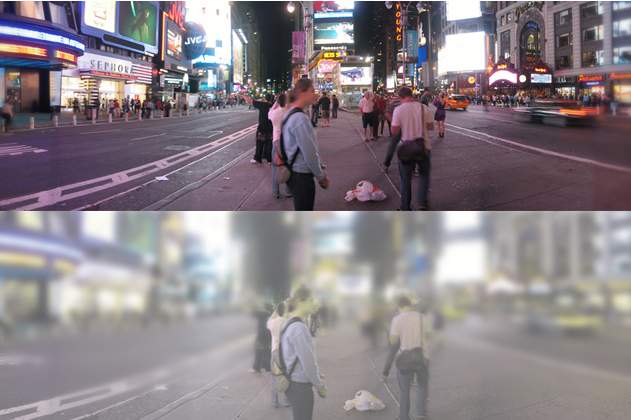
Credit: www.popsci.com
Frequently Asked Questions On What Do Cats See When They Look At Humans?
Q: Can cats recognize humans from other animals?
A: Yes, cats can distinguish between humans and other animals based on their scent and body language. Cats have a keen sense of smell and can recognize familiar human scents.
Q: Do cats perceive humans as bigger animals?
A: Cats perceive humans as larger animals due to their larger size compared to cats. This perception also influences how cats interact with humans and their behavior towards them.
Q: How do cats interpret human facial expressions?
A: Cats can interpret human facial expressions to some extent. They rely on cues such as eye contact, eyebrow movement, and the presence of a relaxed or tense facial expression to understand human emotions. However, their interpretation may not be as accurate as a human’s.
Q: Do cats recognize individual humans?
A: Yes, cats have the ability to recognize individual humans based on their scent, voice, and physical appearance. They form associations and memories of specific individuals and can display different behaviors and preferences towards different people.
Q: What do cats see when they look at human eyes?
A: Cats perceive human eyes differently than their own species. While humans have a wider range of colors and details in their vision, cats primarily see human eyes as dark oval shapes. However, cats pay more attention to human body language and overall facial expressions rather than just focusing on the eyes.
Q: How do cats interpret human vocalizations?
A: Cats can interpret different human vocalizations and tones of voice. They often respond to familiar voices and may associate specific sounds with certain actions, such as the sound of opening a can of cat food. However, cats primarily rely on nonverbal cues and body language to understand human intentions and emotions.
Conclusion
Cats possess a unique perspective on humans, perceiving us through their own feline lens. Their vision is adept at detecting motion, colors, and shapes, giving them a distinct insight into our world. While we may never fully understand what cats truly see, we can appreciate the bond we share and the curiosity they bring to our lives.
So, next time your cat gazes into your eyes, remember that their view of you is a fascinating blend of feline perception and the connection you share. Keep cherishing those moments!


